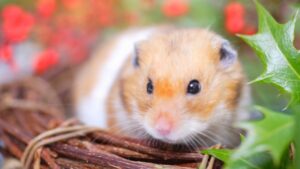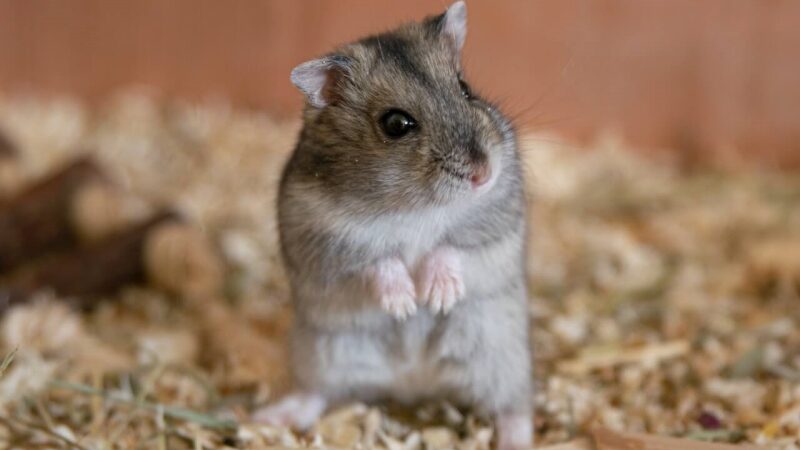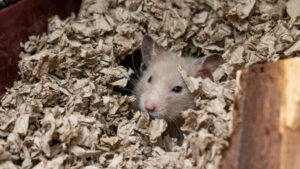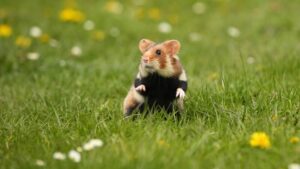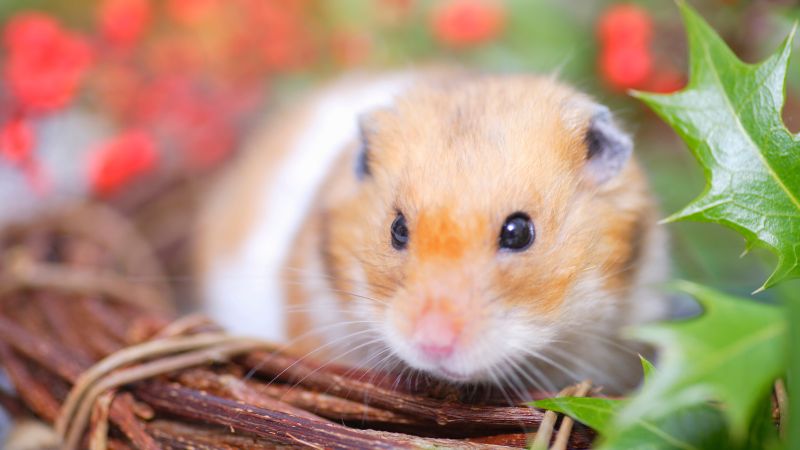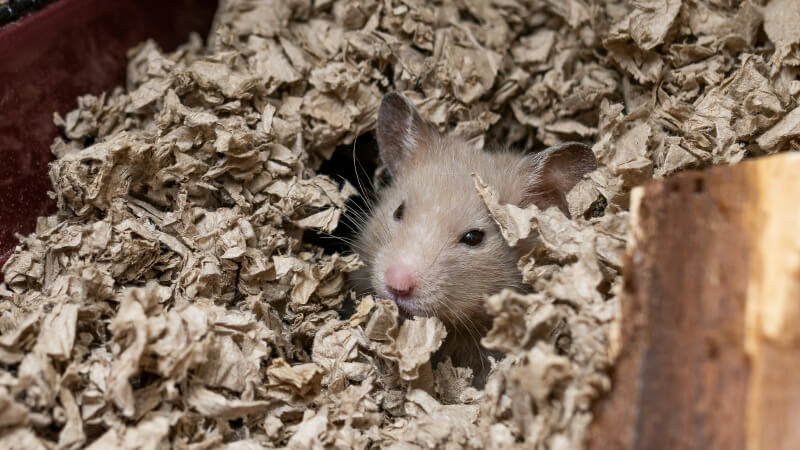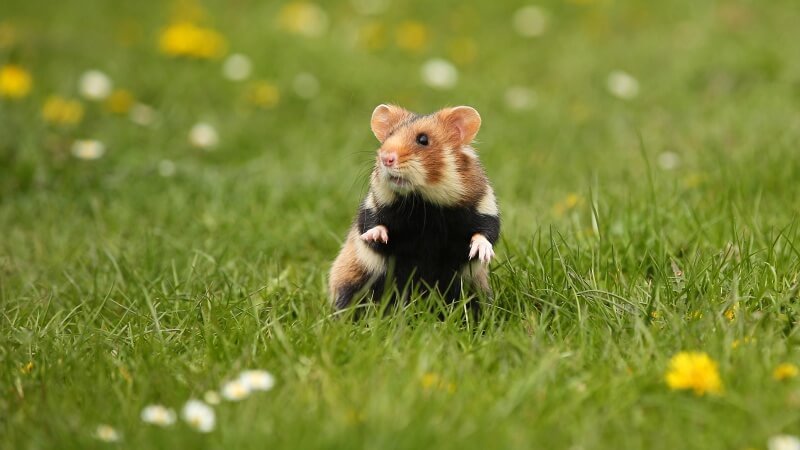While hamsters require the basics, like a cage, food, and bedding, adding fun toys and accessories takes their habitat to the next level. An enriched environment keeps hamsters active, entertained, and promotes good health.
From tunnels to chews, platforms to hides, the options for outfitting their space are endless! Dwarf hamsters, in particular, thrive with activities and obstacles. Syrian hamsters also appreciate a mix of toys and gadgets.
In this guide, we’ll explore all the best hamster accessory options and how to pick products that are safe and durable. You’ll find an extensive list of recommended toys as well as DIY toy ideas. Let’s dive into creating an enriched world for your tiny pet!
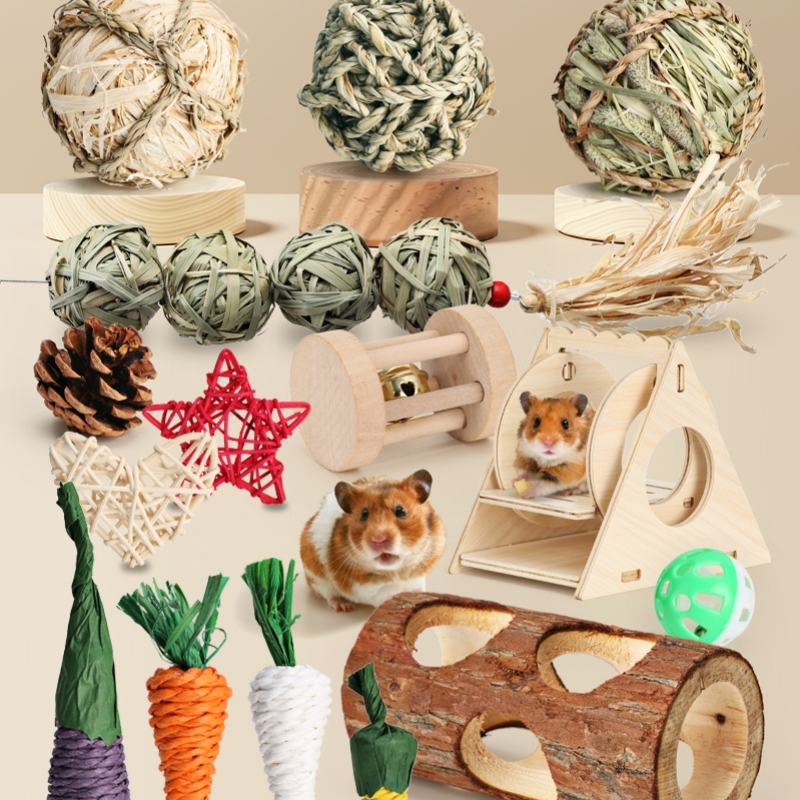
Exercise/Activity Toys
Physical activity is incredibly important for hamsters to stay fit and release energy. Here are some top exercise accessories:
- Exercise Wheels – A must-have! Select a solid, appropriately sized wheel with no crossbars they could catch on. For dwarfs, aim for 6-8 inches in diameter and 8-12 for Syrians. Some attach to cage bars but free standing is safest.
- Tunnels – Clear connector tubes let you create zigzagging tunnel systems to run through and link multi-level cages. Ensure diameters fit their body size.
- Mazes – Labyrinth-style plastic or wood mazes with multiple paths provide mental stimulation.
- Ball Pit – Filled with colorful plastic balls, dig pits allow foraging activity. Supervise use.
- Seesaws – A fun way to develop balance and coordination. Look for a sturdy, covered design they can safely climb on.
- Swings – Hanging, hammock-style swings made of wood, rope or fabric with give gentle gliding movement for play.
- Ramps and Ladders – Link platforms and levels in their cage to promote climbing. Include high sides for safety.
- Trapeze Bar – ceiling mounted bars encourage acrobatics. Use a sturdy metal bar covered in vet wrap.
Providing outlets for exercise prevents boredom and obesity. Vary the activities to keep their mind engaged too. Monitor for safety with any physically interactive accessories.
Foraging Toys
In the wild, hamsters spend much of their time foraging for food. Bring foraging behaviors into their enclosure with these accessories:
- Treat Balls – Plastic balls with holes can be filled with dry food for rolling play that distributes treats.
- Snuffle Mats – Woven mats made of fleece or fabric with hiding holes for scenting out and finding treats.
- Hide ‘n Squeak – Hollow plastic eggs they push around to release pellets or seeds.
- Treat Puzzles – Maze-like dispensers made of wood or plastic that only release treats when manipulated a certain way.
- Treat Blocks – Blocks of compressed hay or feed with holes they gnaw at to access the food inside.
- Foraging Boxes – Hide food under substrates like dry leaves, shredded paper or hay in cardboard boxes.
- Scatter Feed – Spread dry food through their bedding instead of bowl feeding to stimulate natural foraging.
The more they work for food, the more enriching playtime is. Supervise challenging treat dispensers first. Rotate activities to keep their minds engaged.
Chew Toys
Small pets like hamsters have continuously growing teeth that require regular wearing down. Provide an assortment of safe chew toys:
- Wood sticks and blocks – Untreated wood is fully digestible and great for chewing. Avoid painted wood.
- Hay and straw chews – Compressed cubes of timothy hay or twisted straw bundles.
- Loofah chews – The fibrous plant sponge material is completely edible.
- Rope toys – Braided cotton rope satisfies chewing urges.
- Mineral blocks – Salt licks safely file down overgrown teeth. Look for hamster blocks.
- Lava ledges – Sourced from natural lava rock, ledges safely grind teeth.
- Twig bundles – Collected pesticide-free twigs from apple, willow, or birch trees are ideal.
Rotate new chew toys into the habitat weekly to keep their interest. Supervise any toys with small removable parts to prevent choking hazards.
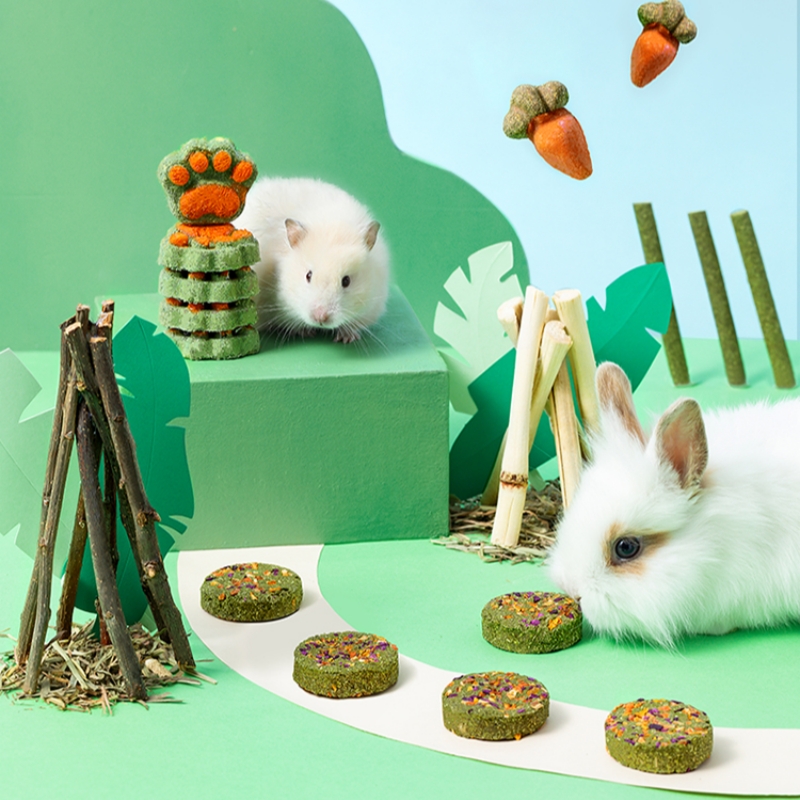
Hideout Houses for Security
Hamsters feel safest with places to hide away and nest. Here are some cozy hide options:
- Wooden hideouts – Either store-bought or DIY wood boxes with multiple exits. Use kiln-dried pine.
- Igloos – Sturdy plastic domes that provide security. Some connect via tunnels.
- Hut houses – Wooden, ceramic or woven grass huts offer enclosed spaces.
- Teepees – Small fabric teepees with an open and closed side.
- Log hides – Hollow logs, either natural cork bark or resin models.
- Plant pots – Unglazed terracotta pots laid sideways create instant burrows.
- Bendable wood – Flexible wood pieces can be shaped into tunnels and caves.
- Tissue boxes – Recycling empty Kleenex boxes into hideaways.
Hamsters feel most secure in an enclosed space with only 1-2 entries they can easily defend if needed. Spot clean hides weekly.
Platforms, Ramps and Climbing Toys
Hamsters love to climb, especially active dwarf breeds. Expand usable space with platforms, ramps and climbing accessories:
- Ladders – Linked levels with ladders made of wood, rope or mesh with grippable rungs.
- Bridges – Flat, straight wood or plastic bridges for traversing cage levels and accessories.
- Ramps – Gradually sloped ramps between platforms help prevent falls. Include rails.
- Perches – Branch-style wood or bamboo perches promote climbing and gnawing.
- Swings – Hanging rope, wood and fabric swings create play zones at all heights.
- Lava ledges – Install ledges made of porous natural lava rock for safe footing.
- Bendy bridges – Flexible vine and wood bridges can form different shapes.
- Rock wall – Turn a cage wall into a rock climbing wall using resin rocks with grips.
Rope toys also build climbing muscles. Ensure platforms are secure and accessible. Supervise the first use of new layouts.
Sand and Water Bowls
Some hamsters enjoy digging in or rolling around in bowls of sand or water for sensory stimulation. Provide supervision and avoid getting bedding wet.
- Sand bowl – Add 2-3 inches of sterile reptile sand. Chinchilla sand is very fine and soft.
- Shallow water bowl – Use a heavy ceramic bowl that won’t spill easily. Change water daily.
- Pebbles – Collected smooth river pebbles in their sand bowl create a new texture.
- Herbs/spices – Add a pinch of dried lavender or rose petals to sand or water for natural scents.
These accessories encourage natural behaviors, like bathing in dust for coat cleaning. Scatter feed into the sand to encourage foraging too.
Recommended Commercial Hamster Toys
Now that you know what types of accessories to look for, here are some recommended pre-made toys from top brands that pet owners and hamsters love:
- Niteangel Natural Living Tunnel System – Interconnectable grass tunnel set.
- Kaytee Hamster Wheel – Colorful solid wheel with a grippy track.
- Living World Seesaw – Teeter totter with great grip.
- TRIXIE Snack Ball – Clear ball dispenses treats during play.
- SunGrow Exercise Maze – Challenging tunnels and lookouts.
- Niteangel Climbing Wall – textured wall with platforms and climbing grips.
- Prevue Hendryx Bridge – Sturdy wood bridge connects accessories.
- Kaytee Nut Knot Nibbler – Wood chews toy with nuts and seeds inside.
- Ware Willow Branch – All-natural apple tree branch chew toy.
- Kaytee Igloo – Sturdy hides with multiple entry points.
When shopping, read reviews and choose quality brands. Prioritize safe materials that are non-toxic if chewed or ingested. Avoid plastic toys as hamsters may chew bits off.
DIY Hamster Toys
If you’re feeling crafty, there are tons of DIY toy options to make at home on a budget. Here are fun homemade hamster toy ideas:
- Toilet paper tube maze – Connect tubes with cuts to form tunnels.
- Egg carton platform – Flip the lid for climbing and hideouts.
- Cardboard box home – Cut holes into boxes of any size for nesting.
- Paper bag tunnel – Paper bags scrunched down are perfect for crawling through passages.
- Treat piñata – Stuff a small paper bag with treats and hang it for batting open.
- Picture frame ladder – Hot glue craft sticks or popsicle sticks between two picture frames.
- Tissue paper nest – Layer colored tissue paper strips in a bowl for shredding.
- Felt chewing squares – Cut colorful felt squares and attach a loop for hanging.
- Sock tunnel – Sew a straight seam down an old sock to make a fabric tunnel.
Use non-toxic glue and kid-safe materials. Avoid small pieces hamsters could nibble off and choke on. Supervise playtime with DIY toys.
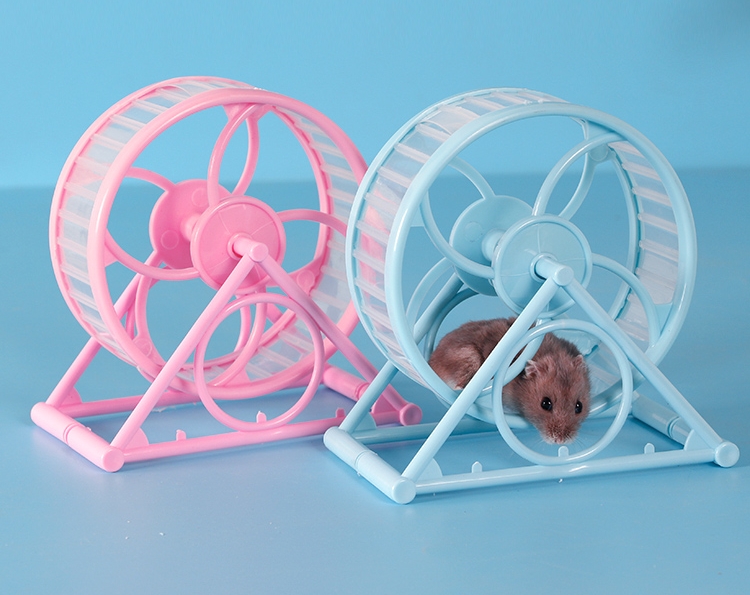
Safe Toy Placement
Once you’ve amassed a great collection of toys, arrange them strategically throughout the cage and habitat area:
- Distribute toys throughout different cage levels and accessories.
- Place tunnels and obstacles between platforms to traverse between play zones.
- Put heavier, sturdier toys like houses on the cage bottom.
- Position the water source away from toys to avoid splashing and leaks.
- Spot clean toys weekly by hand or in the dishwasher in a sanitized setting.
- Avoid very cluttered layouts that limit mobility. Leave some clear paths.
- Rotate 2-3 new toys weekly to maintain novelty and curiosity.
- Arrange toys that promote exercise on top, and soothing hideouts on the bottom.
Provide toys suited for daytime versus nighttime activity patterns too. Try new arrangements until you find the ideal toy setup.
Safety with Hamster Toys
While toys provide enrichment, make sure any products introduced into your hamster’s space are safe:
- Inspect for small, removable parts that could detach and become a choking hazard.
- Toss out toys with sharp edges or points that could poke or scratch.
- Select non-toxic dyes and materials like untreated wood. Avoid plastic.
- Check for frayed ropes, splintered wood, loose parts, and ragged edges regularly.
- Monitor your hamster closely when first introducing new toys in case they are frightening or unsafe.
- Clean toys weekly since germs and odor build up over time, especially in porous materials.
- Look for a safety neck on hide openings so they don’t become trapped.
- Don’t overload the cage with toys to prevent entanglement or injuries from falling stacked items.
With supervision and common sense, hamster toys will provide years of enjoyment!
Providing Variety and New Experiences
Hamsters can get bored of the same old accessories just like we do. Mix up their toy selection by:
- Rotating 2-3 new toys into the habitat weekly.
- Re-arranging tunnels, platforms and accessories monthly for a fresh feel.
- Offering seasonal toys like fleece blankets in winter, and cooling stone slates in summer.
- Providing toys that appeal to their senses – sounds, textures, scents.
- Cleaning toys fully before bringing them back into rotation. Old smells are uninteresting.
- Experimenting with DIY creations versus store-bought toys.
- Interactive playtime together with you outside the cage.
Newness and variety prevent boredom. Appeal to all their senses to enrich their world.
Conclusion
A stimulating home full of fun hamster toys and accessories is key to your small pet’s health and happiness.
Choose accessories that encourage exercise, foraging, climbing and chewing. Select sturdy, high-quality products and DIY projects from safe materials.
Arrange their habitat thoughtfully and rotate novel toys frequently.
With tunnels to scamper through, swings to glide on, and cozy hideaways, your hammy will have everything they need for activity and comfort in their wonderful home.
Let us know if you have any other hamster toy recommendations!
